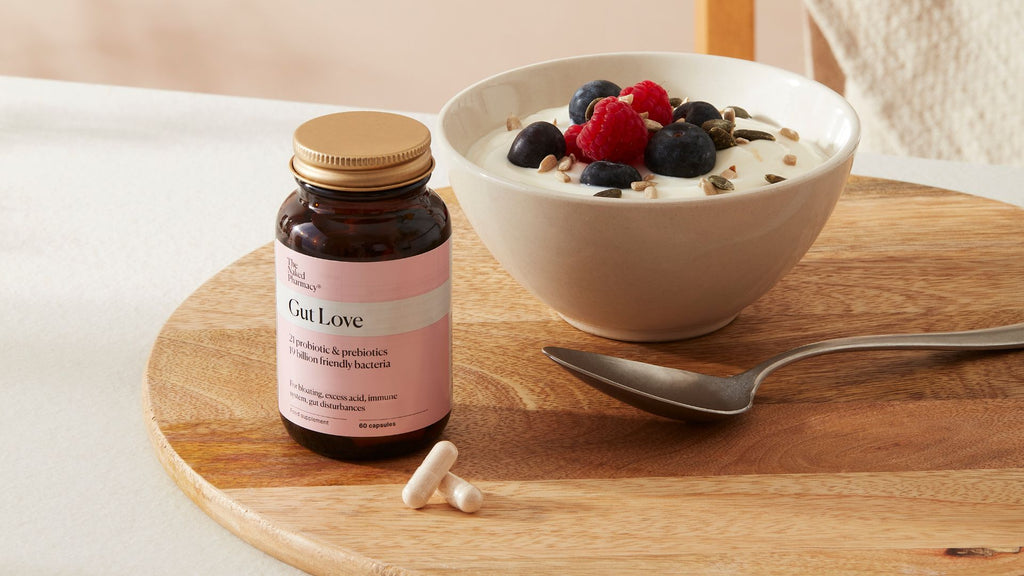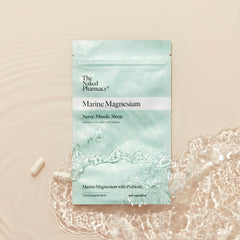As seen in













Why Choose Naked?
People
We're driven to help people feel the best they can. People are at the centre of our business. Our pharmacists love to connect for free and find solutions to your health questions.
Speak to a pharmacistPurity
There’s nothing to hide. No synthetics. Just raw ingredients and strong content. We use the full range of bioactives so you get the maximum impact.
Natural Vs SyntheticProven
The science makes us do it, as proven by multiple effectiveness studies. Each supplement uses premium grade rated organic ingredients, clinically tested to pharmaceutical levels.
View ResearchOnline health assessment
Our team of qualified Pharmacists have designed this health assessment to help you understand your health needs better so we can provide you with personalised recommendations.
It only takes 2 minutes and you will instantly receive your personalised health solution.
Our Journal
Hay fever? No problem! Enjoy spring to the fullest with Natruflex Turmeric
What is hay fever?
Spring is here, and along with blooming flowers and the much-anticipated warmer weather comes the seasonal antagonist for many: hay fever.
Hay fever, also called allergic rhinitis, causes cold-like symptoms. These may include a runny nose, sneezing and itchy eyes. But unlike a cold, hay fever isn't caused by a virus, it is caused by an allergic response to a harmless outdoor or indoor substance the body identifies as harmful (allergen).
Allergens can be inhaled, ingested, or enter through the skin and trigger an immune response causing symptoms of hay fever.
Common allergens that can trigger hay fever symptoms include pollen and dust mites. Tiny flecks of skin shed by cats, dogs, and other animals with fur or feathers (pet dander) also can be allergens.
Pollen is a fine particle released by plants as part of their reproductive cycle. It contains proteins that can cause the nose, eyes, throat and sinuses to become swollen, irritated and inflamed.
You can have an allergy to:
- Tree pollen, released during spring.
- Grass pollen, released during the end of spring and beginning of summer.
- Weed pollen, released in late autumn.
Symptoms of hay fever
- Sneezing and coughing
- A runny or blocked nose
- Itchy, red or watery eyes
- Itchy throat, mouth, nose and ears
- Loss of smell
- Pain around the sides of your head and your forehead
- Rash
- Headache
- Feeling tired

When does hay fever season start and end?
Symptoms are usually worse between late March and September, especially when it's warm, humid and windy. This is when the pollen count is at its highest.
You can check the latest pollen count here
How do you know if it's hay fever or a cold?
As allergies and colds share many of the same symptoms, it can often be difficult to determine which you are suffering from.
Hay fever can last for weeks or months, unlike a cold, which usually goes away after 1 to 2 weeks. Symptoms of a cold may include a sore throat or fever whereas these are uncommon if you are suffering from hay fever.
Hay fever and the immune system
Symptoms of hay fever occur because the immune system perceives the allergens as harmful invaders and goes into defence mode.
- Immune system trigger: When someone with hay fever comes into contact with an allergen (like pollen), their immune system responds by recognising these particles as potential threats. In individuals sensitive to these allergens, the body's immune system treats them as if they were harmful pathogens, such as viruses or bacteria.
- Production of antibodies: The immune system produces immunoglobulin E (IgE) antibodies specific to the allergen. These antibodies are part of the body's adaptive immune response, designed to recognise and bind to the allergen upon future exposure. Each IgE antibody can be very specific, reacting against certain pollens and allergens. This means that a person can be allergic to one type of pollen, but not another.
- Activation of mast cells: The IgE antibodies attach to mast cells, which are a type of white blood cell found in great numbers in surfaces exposed to the external environment, such as the skin and mucous membranes in the nose. Mast cells are loaded with granules containing histamine and other chemicals.
- Release of histamine: When the allergen enters the body again and binds to the IgE antibodies on mast cells, it triggers the cells to release their contents, including histamine, into the surrounding tissues and bloodstream.
- Symptoms of hay fever: Histamine binds to receptors on nearby blood vessels and other cells. This binding causes the blood vessels to become more permeable, leading to leakage of fluid into the tissues, which causes swelling and contributes to typical hay fever symptoms like a runny nose, watery eyes, and sneezing. Histamine can also irritate nerve endings, leading to itchiness.
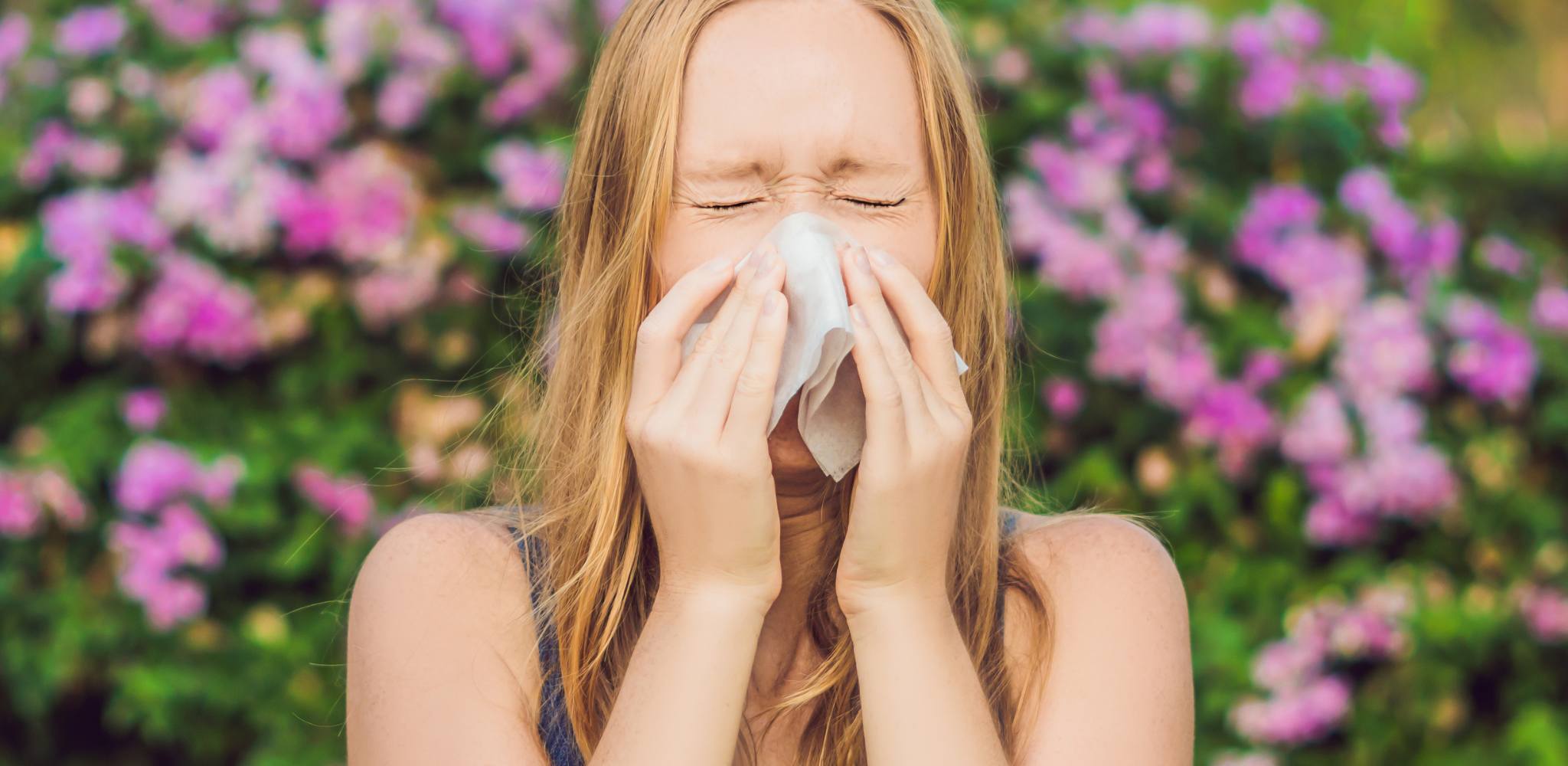
Who is most at risk of hay fever?
Research has found that 49% of the UK has had hay fever symptoms, affecting millions of individuals and making it one of the most common allergies.
Certain factors can make some individuals more susceptible to hay fever than others. Understanding who is at higher risk can help in prevention and management strategies. Here are key groups and factors that influence susceptibility to hay fever:
- Having asthma
- Having other allergies
- Having atopic dermatitis or eczema.
- Having a genetic predisposition to asthma or eczema.
- Younger children and adults are more likely to suffer from asthma and often symptoms improve with age.
- Living or working in an environment that constantly exposes you to allergens — such as pollen, animal dander or dust mites.
- Being exposed to smoke and strong odours that irritate the lining of the nose.
- Some alcoholic drinks, particularly beer and wine, contain histamine which can exacerbate allergy symptoms.
How to manage hay fever?
There is an increasing number of adults and children suffering from hay fever and its symptoms. Symptoms can sometimes be mild however some individuals can find it has a substantial impact on their day-to-day life – interfering with how well you perform at work or school.
Here’s what you can do to help make the most of spring and summer and minimise your symptoms.
Limit exposure to allergens
Stay indoors on high pollen days: Check daily pollen forecasts and try to stay indoors when pollen counts are high, typically on dry, windy days.
Close windows: To prevent pollen from entering your home or car, keep windows closed during pollen season and use air conditioning, if possible, which helps filter out pollen.
Use air purifiers: Consider using air purifiers with HEPA filters in your home, especially in bedrooms, to remove pollen, dust, and other allergens from the air.
Personal hygiene and clothing
Pollen can accumulate on your clothing and hair, so it’s advisable to change clothes and take a shower after returning indoors to remove any allergens.
Wear sunglasses and a hat to help keep pollen out of your eyes and off your hair.
Wash bedding regularly using hot water weekly to remove allergens.

Manage indoor air quality
Regularly vacuum with a HEPA-filter vacuum cleaner and dust with a damp cloth to reduce indoor allergens like dust mites and pet dander, which can exacerbate hay fever symptoms.
Control humidity using dehumidifiers to keep indoor humidity below 50% to help prevent the growth of mould, which can trigger symptoms.
Diet and medications
Stay hydrated: Drinking plenty of fluids can help thin nasal secretions, making it easier to breathe, and relieve a stuffy nose and irritated throat.
Regular use of a saline nasal spray can help rinse allergens out of your nasal passages and relieve congestion.
Antihistamines: These can help relieve sneezing, itching, a runny nose, and watery eyes by blocking histamine, the substance your body makes during an allergic reaction.
Decongestants: These can provide temporary relief from nasal stuffiness but should not be used for more than a few days without consulting a doctor.
Nasal corticosteroids: These sprays help reduce nasal inflammation and are most effective when used before symptoms start and regularly during the allergy season.
Over the counter or prescribed medications like antihistamines, decongestants, and corticosteroid nasal sprays can help alleviate hay fever symptoms. Some possible side effects of antihistamines include drowsiness, dizziness, dry mouth, blurred vision, and constipation.
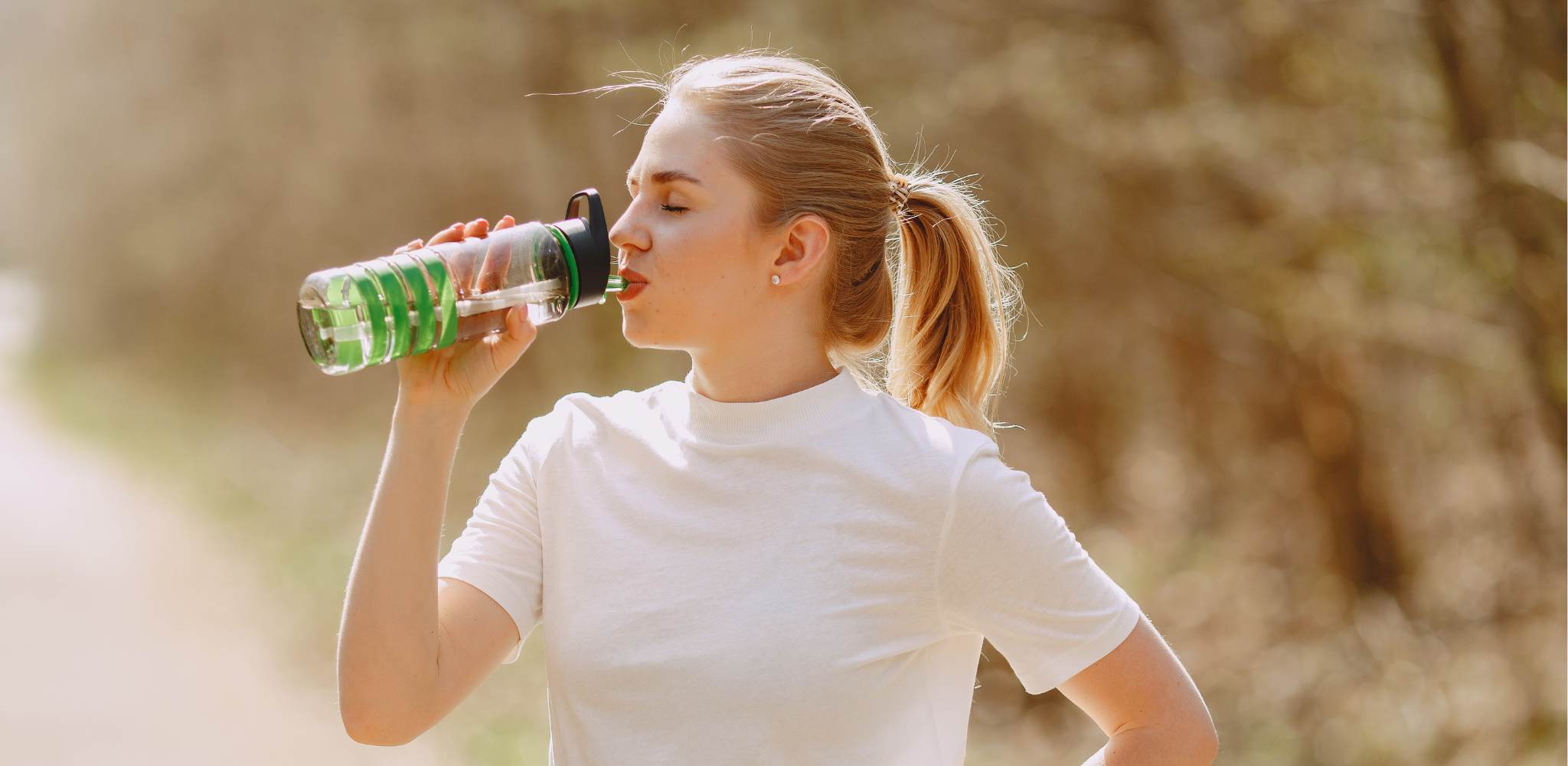
While there are numerous over-the-counter options to help manage symptoms of hay fever, an increasing number of people are turning to natural remedies to avoid side effects and potential medication interactions.
Natruflex Turmeric
Natruflex Turmeric contains high-strength turmeric. It is the presence of the bioactive compounds known as curcuminoids which have been proven to have powerful anti-inflammatory properties.
Symptoms of hay fever such as sneezing, nasal congestions and sinus pressure are largely driven by inflammation caused by the immune system's response to allergens. Turmeric will help to mitigate this response by inhibiting certain pathways and enzymes in the body that lead to inflammation.
Natruflex Turmeric can be taken as a preventative therapy to stop the onset of symptoms as well as taken when symptoms are present to reduce their severity.
Adults and children (12+) can take ONE to TWO capsules daily depending on their symptoms.
For optimal results, our pharmacists recommend taking 1 capsule of Natruflex Turmeric daily before hay fever season starts (March) and continue throughout spring/summer to keep symptoms well controlled.

Gut Love
The gut microbiome, which is the ecosystem of bacteria and other microorganisms living in the digestive tract, plays a critical role in the development and function of the immune system.
As we now know, 70% of our immune system is located in the gut. It is therefore no surprise that a healthy gut microbiome will promote a balanced immune response, which can prevent overly aggressive reactions to non-harmful substances like pollen, thereby potentially reducing allergic responses.
Many factors can damage the balance of healthy bacteria in the gut such as stress, medications and illness. Gut Love contains 19 strains of healthy bacteria and will help to restore the balance of the gut microbiome.
Gut Love is our award-winning symbiotic supplement (containing pre and probiotics) that will help to support the gut microbiome and modulate our body’s immune responses by promoting tolerance to allergens and reducing the inflammatory response associated with hay fever.
Some studies have suggested that certain probiotics can reduce the symptoms of hay fever. For example, strains such as Lactobacillus paracasei, Lactobacillus fermentum, and others have shown potential in clinical trials to reduce eye and nasal symptoms of hay fever. Both of these strains can be found in Gut Love.
Our pharmacists recommend taking TWO capsules of Gut Love each morning with breakfast.
Rhinodoron
Rhinodoron is a natural nasal spray by Weleda designed to help provide relief from symptoms such as sneezing and nasal congestion.
The organic aloe vera and natural saline solution perfectly match the body's balance of sodium and potassium salts. So being 100% natural means Rhinodoron can be used safely over protracted periods for daily nasal hygiene and symptom relief.
It is suitable to use from the age of 3 months +.
Be prepared this spring/summer and be proactive to help significantly reduce the impact of hay fever on your daily life, helping you to enjoy the outdoors more comfortably during allergy season.
Call our pharmacist if you have concerns
Our expert pharmacists are always on hand to answer any questions you might have and to make tailored recommendations based on your individual needs. Please contact us for free health advice on:
@: pharmacist@thenakedpharmacy.com
T: 01483 685 630
Dimple Varu

Dimple is a pharmacist with 12 years of experience working in retail and general practice and now specialises in providing education and advice on natural supplements.
She believes in the power of nature and using natural existing compounds to enhance our health, whether that’s treating pain or helping to prevent long-term conditions. Mum of 1, living a busy life, loves reading and baking when she has the time.
Break the cycle - How probiotics and prebiotics can provide relief from IBS
Irritable Bowel Syndrome (IBS) remains one of the most common gastrointestinal disorders, affecting approximately 10% of the population.* It is characterised by a complex combination of causes, triggers and symptoms. IBS can significantly impact the quality of life of those affected and symptoms can last for days, weeks, or even months.
This blog aims to understand IBS, offering insights into its nature, causes, types, and various management strategies to help those affected navigate the condition more effectively.
What is IBS?
Irritable Bowel Syndrome (IBS) is a gastrointestinal disorder characterised by a group of symptoms that typically occur together. These include recurrent abdominal pain and changes in bowel habits such as diarrhoea, constipation, or a combination of both. IBS is a chronic condition that requires long-term management.
IBS vs IBD: The difference between irritable bowel syndrome (IBS) and irritable bowel disorder (IBD)
IBS and IBD are two conditions that affect the digestive system and are often confused due to their similar names and symptoms. Both are chronic conditions that cause abdominal pain, cramping, and urgent bowel movements. However, despite having similar acronyms and symptoms, these two conditions are very different in their nature, causes, and how they're treated. Here's a breakdown of the key differences:
| Irritable Bowel Syndrome (IBS) | Irritable Bowel Disease (IBD) |
| Classified as a syndrome, defined as a group of symptoms. | Classified as a disease. |
| Related to problems with how the gut works. It doesn't cause visible damage to tissues. | Often used to describe two chronic conditions: Crohn's disease and ulcerative colitis. These are autoimmune diseases are characterised by chronic inflammation of the gastrointestinal tract and can cause permanent harm to the intestines. |
| There is no sign of disease or abnormality during an exam of the colon. Diagnosis is usually made based on symptoms and after ruling out other conditions. | Diagnosis is made through a combination of tests, including blood tests, stool tests, endoscopy, and imaging studies to look for inflammation and damage. |
| Treatment focuses on symptom management and may include dietary changes (like following a low FODMAP diet), stress management, and medications to relieve specific symptoms. | Treatment aims to reduce inflammation, control symptoms, and maintain remission. This can include the use of anti-inflammatory drugs, immune system suppressors, and sometimes surgery. |
IBS is a functional disorder without visible damage to the digestive tract, primarily managed through symptom control and lifestyle changes. IBD, on the other hand, involves chronic inflammation and can cause significant damage to the GI tract, requiring more specific and sometimes aggressive treatment to manage inflammation and prevent complications.
Symptoms of IBS

The symptoms of IBS vary between individuals and affect some people more severely than others. Symptoms can become worse, often during times of stress or after eating certain foods.
Some of the symptoms of IBS ease after going to the toilet:
- Stomach pain and cramping
- Change in your bowel habits – such as diarrhoea, constipation or sometimes both
- Bloating
- Excessive wind
- Occasionally experiencing an urgent need to move your bowels
- Fatigue
- Nausea
- Heartburn
- Back pain
What causes IBS?
Although the exact cause of IBS remains unclear, it is believed to be a result of multiple factors, including alterations in gut motility and food passing through the gut too quickly or slowly, hypersensitivity in the gut and abnormalities in the gut microbiome. Psychological factors such as stress and anxiety can also play a significant role in exacerbating the symptoms.
Often, IBS is referred to as a disorder of the gut-brain interaction and has to do with problems with how our gut and brain coordinate to help our digestive system work. The butterflies you experience in your stomach when you’re nervous or the sinking feeling when you get anxious highlights the strong connection between our emotions, thoughts, and digestion.
Common triggers of IBS

Identifying and avoiding triggers is a key strategy in managing IBS. Common triggers include:
- Dietary factors: Certain foods and drinks can exacerbate symptoms.
- Stress: High-stress levels are known to trigger flare-ups.
- Hormonal changes: Many individuals report a worsening of symptoms during menstrual periods, perimenopause and menopause.
Different types of IBS
IBS is classified into three main types, based on the predominant bowel habit.
- IBS with constipation (IBS-C)
- IBS with diarrhoea (IBS-D)
- IBS with mixed bowel habits (IBS-M)
Understanding the type of IBS is crucial for tailoring treatment effectively.
How is IBS diagnosed?
There is no specific test for IBS. Diagnosis typically involves a process of elimination to rule out other causes of the symptoms. After ruling out other conditions through tests such as blood tests, stool tests, and colonoscopy, IBS is diagnosed if no other cause is found.
How long does IBS last?
IBS is a chronic condition, meaning symptoms can last for years or even a lifetime. However, symptoms can change over time and many people can manage their symptoms effectively with treatment and lifestyle adjustments.
Who is at risk for IBS?
Those more likely to be at risk for IBS are:
• Younger people: most people first get IBS before they are 45 years old.
• Women: women get IBS almost twice as often as men.
• Have had recent gastroenteritis.
Link between IBS and menopause
Hormonal fluctuations during menopause can affect gastrointestinal function, potentially exacerbating IBS symptoms. Some women report the onset or worsening of IBS symptoms during this period.
Treatment for IBS
Treatment is typically multifaceted, including:
Medications: Different medicines are used for IBS, depending on the symptoms. These include medicines to prevent constipation, diarrhoea, pain, and spasms.
Psychological Therapies: Stress management strategies like cognitive behavioural therapy (CBT) can be effective.
Dietary Adjustments: Tailoring the diet to minimise consuming foods that trigger symptoms. In some cases, a high-fiber diet can reduce symptoms.
Probiotics: To help restore and balance the gut microbiome.
Regular exercise: Helps to reduce stress and can promote bowel function.
Adequate sleep: Essential for overall health and stress management.

What is a FODMAP diet?
Diet plays a crucial role in managing IBS. FODMAP is an acronym that stands for fermentable oligosaccharides, disaccharides, monosaccharides, and polyols. These are small carbohydrates that are difficult to digest and can be fermentable by bacteria in the gut, leading to increased gas, bloating, and other IBS symptoms.
A low FODMAP diet involves reducing the intake of these carbohydrates and is effective for many people with IBS.
Examples of FODMAPs:
- Oligosaccharides: garlic, onions, legumes, and wheat.
- Disaccharides: mainly sucrose, lactose (mostly in dairy products), and maltose.
- Monosaccharides: simple sugars such as fructose and glucose found in fruit, honey, and sugary drinks.
- Polyols: found in stone fruits, many sugar-free sweeteners, and some vegetables like mushrooms.
Food high in FODMAPs:
| Fruits | Grains | Vegetables | Legumes |
| Apples | Barley | Artichoke | Almonds |
| Apricots | Couscous | Asparagus | Baked Beans |
| Blackberries | Rye | Beets | Black Beans |
| Cherries | Semolina | Brussels Sprouts | Black-Eyed Peas |
| Figs | Wheat | Butternut Squash | Broad Beans |
| Mango | Cauliflower | Cashews | |
| Nectarines | Fennel | Chickpeas | |
| Peaches | Garlic | Kidney Beans | |
| Pears | Leeks | Lentils | |
| Plums | Mushrooms | Pinto Beans | |
| Prunes | Onions | Pistachios | |
| Pomegranates | Soybeans | ||
| Split Peas |
Food low in FODMAPs:
| Fruits | Grains | Vegetables | Nuts & Seeds |
| Banana | Brown Rice | Aubergine | Almonds |
| Grapes | Buckwheat | Bean Sprouts | Brazil Nuts |
| Kiwi | Maize | Bok Choy | Chia Seeds |
| Lemon | Millet | Cabbage | Hazelnuts |
| Limes | Oats | Carrot | Macadamia Nuts |
| Oranges | Polenta | Choy Sum | Peanuts |
| Papaya | Quinoa | Cucumber | Pecan |
| PassionFruit | Tapioca | Green Bell | Pine Nuts |
| Pineapple | Pepper | Pumpkin Seeds | |
| Rhubarb | Kale | Sesame Seeds | |
| Strawberry | Lettuce | Walnuts | |
| Okra | |||
| Tomato | |||
| Spinach | |||
| Yam |
Probiotics & the gut microbiome
The gut microbiome is the name for the trillions of microbes that live in our gut. Research has shown that the health of our gut microbiome has a profound impact on our overall health and holds a connection with our brain, skin and immune system. It is therefore no surprise that the gut microbiome plays an important role in IBS.
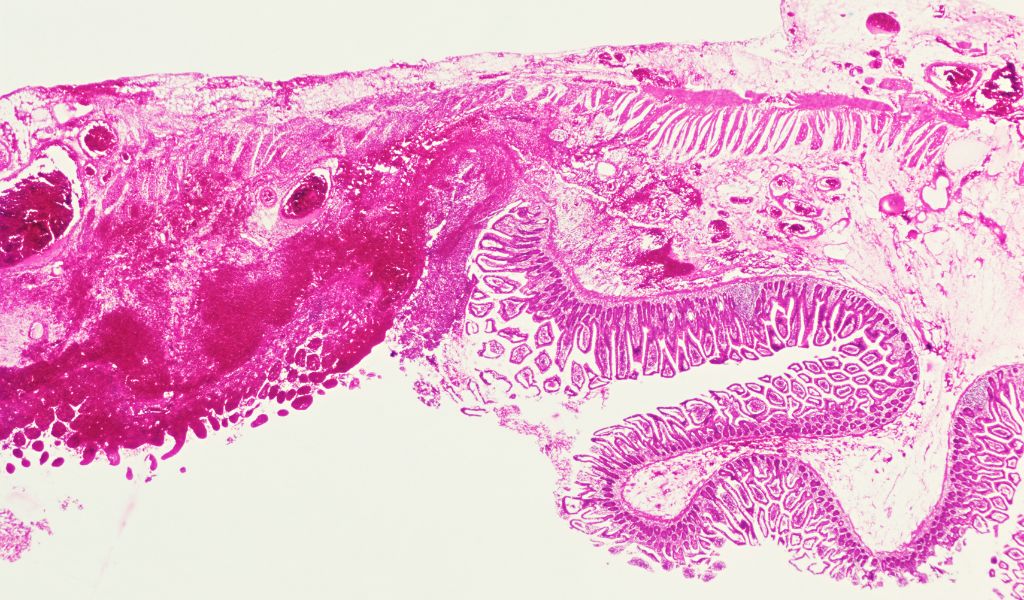
Probiotics are live microorganisms, often referred to as "good" or "friendly" bacteria. They are found in fermented foods like yogurt, kefir, and supplements. Many factors can cause an imbalance of the healthy bacteria in the gut such as antibiotics, stress, illness, and lifestyle. When an imbalance occurs, known as dysbiosis, gastrointestinal disorders such as IBS can occur.
Therefore, by re-balancing the gut microbiome with probiotics, you can help restore the balance of intestinal flora, improving gut motility, immune function, and immune response.
The NHS recommends that probiotics can be used to help manage the symptoms of IBS and that they should be continued for at least 4 weeks.
Several strains of probiotics have been studied for IBS, with some showing promise in alleviating symptoms such as bloating, gas, and abdominal pain. Commonly researched strains include Lactobacillus, Bifidobacterium, and Saccharomyces boulardii.
Prebiotics
Prebiotics primarily serve as food for the friendly gut bacteria, helping to nourish and allow them to thrive. This, in turn, helps to improve the overall health of the gut microbiome, which we know is closely linked with digestive and gut health.
As highlighted above, IBS has a broad range of symptoms. It is important to look for supplements containing probiotic strains that have been found to offer benefits for IBS. Look for a high-quality daily supplement for all-round gut support.
What makes a good probiotic supplement?
We know that the market is saturated with hundreds of different probiotics and it can often be a minefield to navigate. Here’s what to look for to ensure you are choosing the best probiotic for you:
- Multi strain: different probiotic strains have different effects on health. Some strains can be beneficial for general gut health, while others are specifically targeted for conditions like IBS and immune health. Looking for supplements that have included a variety of strains will have the biggest positive impact on your gut health.
- CFU count: CFU stands for colony-forming units, which indicate the number of live and viable microorganisms in a probiotic. While higher CFU counts are often thought to be more effective, the optimal count depends on the specific strain and the health condition being targeted. Some conditions might benefit from a higher CFU count, while for general maintenance, a lower count might be sufficient.
- Prebiotics: prebiotics, are fibres that feed the beneficial bacteria in your gut. This combination, often referred to as a symbiotic, can enhance the probiotic's effectiveness.
- Delivery to the gut: probiotics are very delicate and easily damaged by stomach acid. It is important to ensure the probiotic you are taking reaches the gut where it is most beneficial.
- Stability: some probiotics need to be refrigerated to maintain their potency, while others are shelf-stable due to special formulations or packaging. Always check the label for storage instructions.
- Purity: look for supplements that do not contain unnecessary additives and bulking agents that may negatively impact your symptoms. Some probiotics may even contain dairy, soy, gluten, or other common allergens.
Gut Love
Gut Love is our pre and probiotic supplement designed to help restore the balance of healthy bacteria within the gut.
It contains 19 strains of healthy bacteria and 2 strains of prebiotics providing 19 billion CFU per two capsules.
One of the prebiotics in the formulation, slippery elm, also provides stability to the formulation and ensures delivery of the probiotics to the gut. It creates an emulsion barrier around the probiotics ensuring they reach the gut safely.
Gut Love does not need to be refrigerated and should be stored in a cool, dry location away from direct sunlight.
It is dairy and gluten-free and free from any other synthetic additives and ingredients.
Gut Love is an effective treatment choice for individuals suffering with IBS. It will help to restore the balance of healthy bacteria in the gut and reduce symptoms such as bloating, cramps, and irregular bowel habits as well as strengthen your immune system.
Understanding and managing IBS requires a comprehensive approach, involving dietary and lifestyle adjustments, stress management, and sometimes medication. Each individual’s experience with IBS is unique, and finding what works best for you might take time and experimentation.
Call our Pharmacists if you have concerns
Our expert pharmacists are always on hand to answer any questions you might have and to make tailored recommendations based on your individual needs. Please contact us for free health advice on:
@: pharmacist@thenakedpharmacy.com
T: 01483 685 630
Dimple Varu

Dimple is a pharmacist with 12 years of experience working in retail and general practice and now specialises in providing education and advice on natural supplements.
She believes in the power of nature and using natural existing compounds to enhance our health, whether that’s treating pain or helping to prevent long-term conditions. Mum of 1, living a busy life, loves reading and baking if she has the time.
Clear the mist - How to combat brain fog
Many of us have experienced moments where our mind feels clouded, making concentration and memory recall more challenging than usual. This is commonly referred to as brain fog and can be very frustrating to deal with. While it’s not a medical diagnosis in itself, brain fog is a symptom that can significantly impact your quality of life.
What is brain fog?
Severe brain fog can be debilitating, particularly if you need to function day-to-day in a high-performance or pressured environment at home or work. It can affect your levels of confidence, self-esteem and performance.
Brain fog causes
Many factors can contribute to brain fog such:
Lifestyle Factors: Poor sleep quality, lack of exercise, and a nutrient deficient diet.
Medical Conditions: Chronic fatigue syndrome, fibromyalgia, anaemia, depression, thyroid disorders. diabetes and post viral syndrome are among the conditions associated with brain fog.
Medications: Certain medications can affect cognitive function as a side effect.
Stress and Mental Health: High-stress levels and mental health issues like anxiety and depression are closely linked to brain fog.
Other factors that can affect brain fog are age, hormonal changes, nutritional deficiencies, and even the aftermath of conditions such as COVID.
Brain fog symptoms
Brain fog manifests as cognitive impairments including:
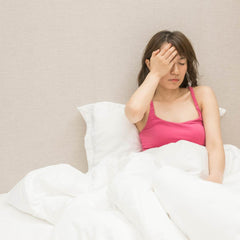
- Mood swings
- Lack of focus
- Irritability
- Confusion
- Trouble sleeping,
- Low energy or fatigue
- Forgetfulness
- Trouble concentrating
- Low motivation
- Difficulty making decisions
Menopause brain fog
Brain fog during perimenopause and menopause is a real and sometimes challenging symptom faced by many going through the hormonal transition.
Hormonal fluctuations - particularly a decrease in oestrogen and testosterone - are believed to play a critical role in this. When the levels of these hormones begin to fall during perimenopause and menopause, you can experience a range of cognitive symptoms including memory loss, difficulty staying focused, losing your train of thought, and getting confused easily.
Oestrogen is involved in regulating neurotransmitters that affect cognition, including serotonin and dopamine. As these hormone levels fluctuate, so does the clarity of thought, making brain fog a frequent complaint amongst menopausal women.
Testosterone strengthens nerves in the brain and contributes to mental sharpness and clarity, as well as overall energy levels. It also strengthens arteries that supply blood flow to the brain, which is crucial to protect against loss of memory.
Brain fog is very common. In research conducted by the British Menopause Society, almost 40% of the women interviewed reported issues with memory and concentration as they go through the menopause.*
*Menopause - Understanding the impact on women and their partners.
The COVID connection
Post-COVID brain fog has emerged as a lingering symptom for many individuals recovering from the virus due to consequences such as inflammation and the overall stress of dealing with the illness.
In one study, 7.2% of people who reported having long COVID experienced brain fog, and this symptom was more common in those who had a more severe case of COVID-19.
Stress

Chronic stress can increase blood pressure, weaken the immune system, and trigger depression. According to a study undertaken in 2017, stress can also cause mental fatigue.
Chronic stress leads to sustained high levels of cortisol, the body's stress hormone. High cortisol levels can impair cognitive function such as memory and concentration, contributing to brain fog.
Stress can also disrupt the balance of neurotransmitters, such as serotonin and dopamine, which play crucial roles in mood regulation, focus, and cognitive processing. Imbalances in these chemicals can lead to difficulties in concentrating and memory lapses.
Chronic stress is linked to increased inflammation in the body, which can negatively affect brain function and lead to symptoms of brain fog.
Medications
Brain fog is a known side effect of certain medications, such as certain painkillers, antidepressants and sleep medications.
Brain fog can also occur after cancer treatments. This is often referred to as ‘chemo brain’.
Sleep
The NHS recommends that adults should aim for 7 – 9 hours of sleep each night. However, Nuffield Health surveyed 8,000 adults in the UK and found that most adults are getting an average of 5.9 hours of sleep every night in 2023.
Poor sleep quality and sleep deprivation can significantly contribute to cognitive impairments, including reduced attention span, memory issues, and decreased mental clarity.

How to clear the fog
Brain fog can be frustrating, but relief is possible. You should not ignore your symptoms because, if left untreated, brain fog can impact your ability to function and undertake tasks.
Addressing brain fog involves treating underlying causes or making lifestyle changes to improve cognitive function, these include:
Sleep: Ensuring adequate, high-quality sleep can significantly reduce symptoms of brain fog. Aim for 7-9 hours per night and maintain a consistent sleep schedule.
Nutrition: A diet rich in fruits, vegetables, whole grains, and omega-3 fatty acids (found in fish) can support brain health. Avoiding excessive alcohol, sugar, and processed foods is also advisable.
Exercise: Regular exercise increases blood flow to the brain and has been linked to improved cognitive function. Activities like walking, swimming, and yoga can be particularly beneficial.
Stress Management: Techniques such as mindfulness, meditation, and yoga can reduce stress and improve mental clarity.
Hydration: Adequate hydration is crucial for maintaining cognitive function. Aim for 8 glasses of water daily.
Mental Stimulation: Engage in activities that challenge your brain, such as puzzles, learning a new skill, or reading.
Magnesium
Magnesium is an essential nutrient that plays a pivotal role in over 300 physiological processes in the body, including those involved in energy production, sleep quality, and the regulation of neurotransmitters. It’s, therefore, no wonder that magnesium has been identified for its potential to alleviate brain fog.
Magnesium aids in improving brain function by supporting the nervous system, enhancing sleep quality, reducing inflammation, and reducing stress levels—all factors that can mitigate the symptoms of brain fog. For those individuals navigating menopause, magnesium's role in balancing hormones further highlights its significance.
Marine magnesium supplements
Marine Magnesium can help to restore clarity for anyone experiencing brain fog. Our bodies require this micromineral to function healthily however our bodies do not synthesise or store magnesium. It is therefore essential that we get an adequate daily intake from our diet or high-quality food supplements.

“There are so many magnesium supplements on the market, which one should I choose?”
We understand how overwhelming it can be when deciding on which Magnesium supplement you should be taking. The key to selecting the most suitable supplement lies in understanding the difference in the quality and purity of the different supplements available.
Our Marine Magnesium is sourced from purified seawater and is in the form of magnesium hydroxide. Due to its natural and pure source, it is quickly absorbed by the body making it more effective and very gentle on the stomach.
Marine Magnesium contains only 3 ingredients:
- Magnesium (from seawater)
- Organic baobab (natural prebiotic)
- A natural, tapioca capsule shell.
Most other magnesium supplements such as magnesium glycinate, citrate, picolinate and taurate are synthetic and manufactured using chemicals and often contain numerous additives, fillers and bulking agents.
Like your food, it is best to avoid supplements that are overprocessed and contain unnecessary additives that can often affect the supplement's effectiveness and even be harmful to health. Remember to always read ingredient labels to help you choose your supplements wisely - choose NAKED.
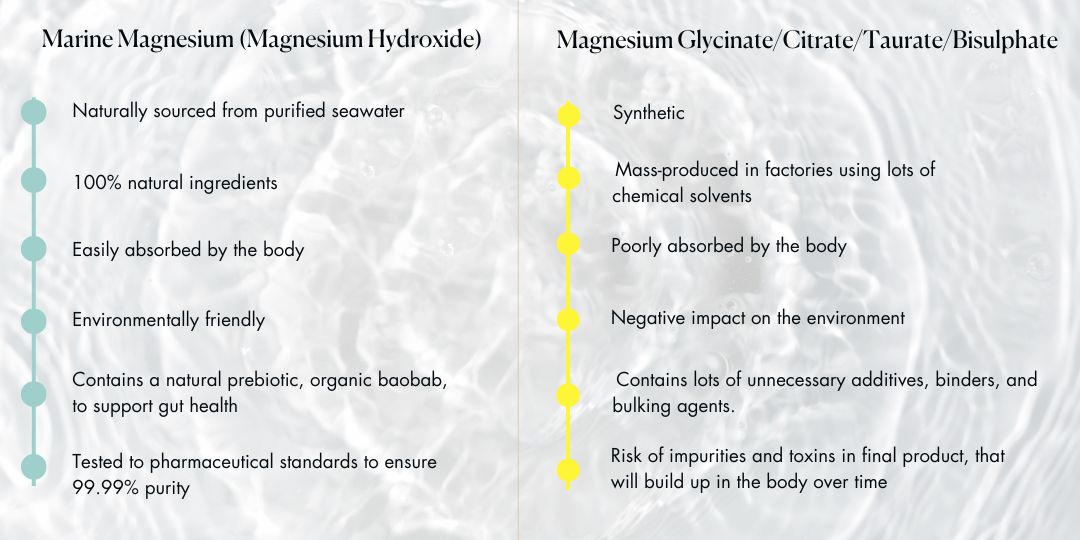
Best magnesium supplement
Marine Magnesium has been voted as one of the best magnesium supplements by experts in The Independent. Maz Packham, a nutritionist says:
This supplement (Marine Magnesium) is made from pure seawater plus it has added prebiotic to support the gut. The only other ingredient is its tapioca shell.
Best magnesium supplements, approved by experts | The Independent
Shop Marine Magnesium now
Call our Pharmacists if you have concerns
If you have any concerns about brain fog or any other health conditions, please call our pharmacists for free advice. (+44) 01483 685 630
Dimple Varu

Dimple is a pharmacist with 12 years of experience working in retail and general practice and now specialises in providing education and advice on natural supplements.
She believes in the power of nature and using natural existing compounds to enhance our health, whether that’s treating pain or helping to prevent long-term conditions. Mum of 1, living a busy life, loves reading and baking if she has the time.
Sign up to our newsletter and get 20% off!
No junk, (just like our supplements)! Just naturally intelligent science, podcasts and product news.
*Discount code valid on The Naked Pharmacy product range only and for first onetime purchase order only. Cannot be used in conjunction with any other offers. We will never share your details with any 3rd parties, please review our Privacy Policy for more information.




















